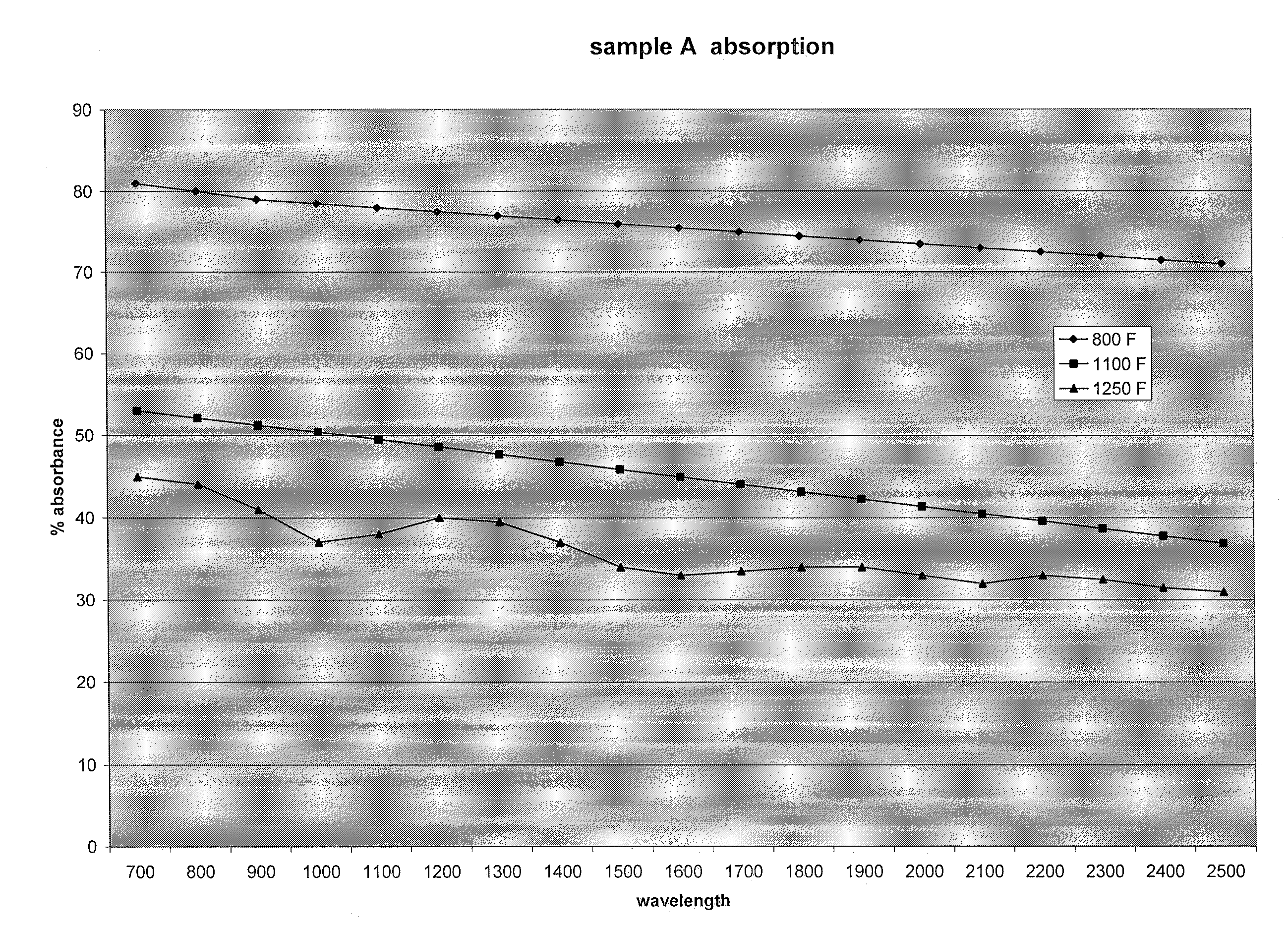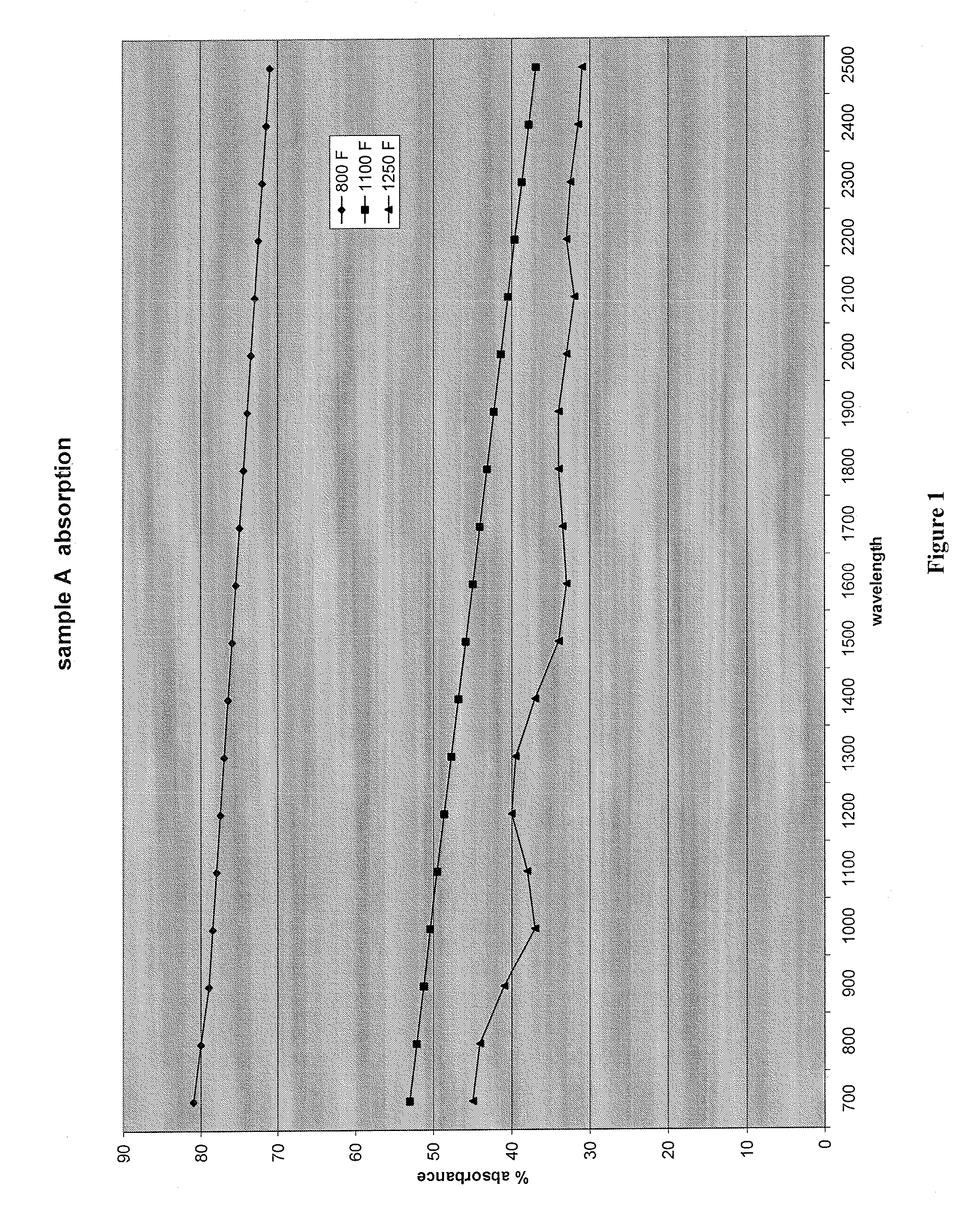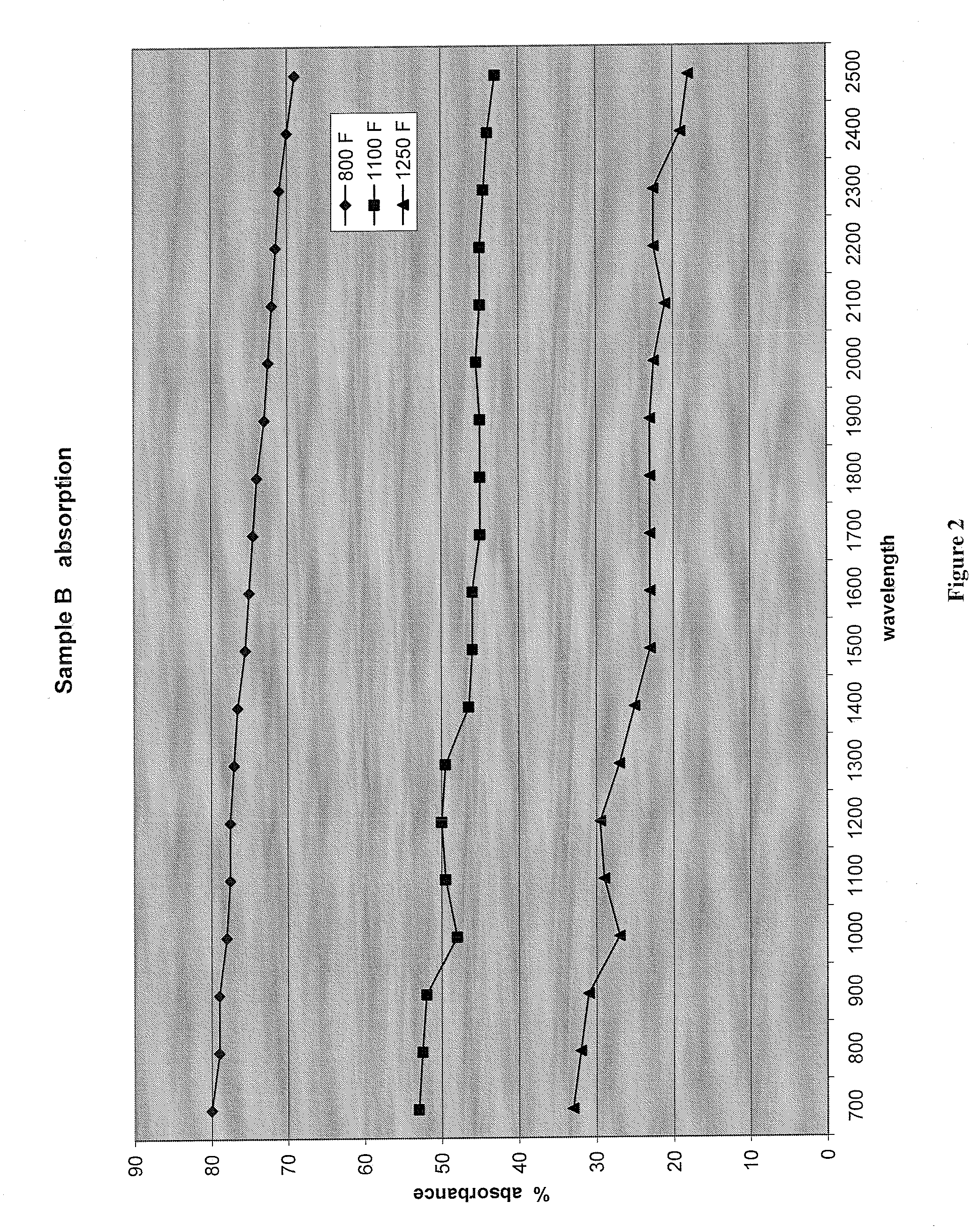Ultra Low-Emissivity (Ultra Low E) Silver Coating
a silver coating, ultra-low emissivity technology, applied in the direction of metal/alloy conductors, conductors, conductors, etc., can solve the problems of insufficient sintering of coatings, and limited absorption range of carbon black, so as to minimize thermal differences, good adhesion to substrates, and wide firing range
- Summary
- Abstract
- Description
- Claims
- Application Information
AI Technical Summary
Benefits of technology
Problems solved by technology
Method used
Image
Examples
examples
[0050]The following examples are provided to illustrate preferred aspects of the invention and are not intended to limit the scope of the invention.
[0051]The ingredients in Table 4 are combined as follows. The co-grind additive (frit and selenium metal) and the staining compound were added to a ball mill and ground for about 10 hours. The particles were ground down to about 3-4 microns. The particles are screened through a 325 mesh screen (3.6 microns). The particles are dried at 650° F. and hammer milled until they pass through a 0.020 screen.
[0052]The staining compound ingredients are ball milled with water for one hour, dried and screened through a 200 mesh screen.
[0053]A separate portion of a lead, zinc and / or bismuth frit is ground to a D50 particle size of 2.5-4.5 microns.
[0054]Carbon black, having an ash content of 0.3 wt %, a density of 450 grams / liter and average particle size 56 nanometers, was used. The carbon black was added to organic medium C7, the C7 being commerciall...
PUM
| Property | Measurement | Unit |
|---|---|---|
| tap density | aaaaa | aaaaa |
| wt % | aaaaa | aaaaa |
| wt % | aaaaa | aaaaa |
Abstract
Description
Claims
Application Information
 Login to View More
Login to View More - R&D
- Intellectual Property
- Life Sciences
- Materials
- Tech Scout
- Unparalleled Data Quality
- Higher Quality Content
- 60% Fewer Hallucinations
Browse by: Latest US Patents, China's latest patents, Technical Efficacy Thesaurus, Application Domain, Technology Topic, Popular Technical Reports.
© 2025 PatSnap. All rights reserved.Legal|Privacy policy|Modern Slavery Act Transparency Statement|Sitemap|About US| Contact US: help@patsnap.com



